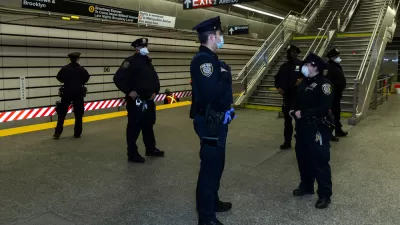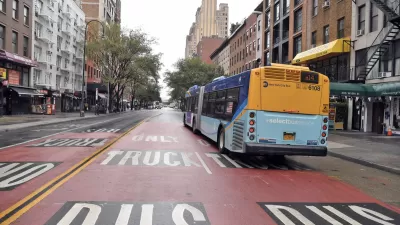Conceived as a stop-gap measure, New York City's cluster site program essentially pays landlords to house homeless people. Now, Mayor de Blasio wants to convert some of those sites directly into affordable units.

Legal obligations require New York to house some of its homeless population, resulting in so-called "cluster sites" in private apartment buildings, with the city footing the bill. The shelter program has been controversial, attracting criticism for its costs, hazards to tenants, and general unsustainability.
However, Nikita Stewart writes, "Under Mayor Bill de Blasio, the city's reliance on the cluster sites has grown along with the rise in homelessness, which has arguably been the biggest failure of his tenure."
Under De Blasio's new plan, announced in December, "the city would use public financing to help nonprofits buy roughly a third of the apartments currently used for the homeless, and then convert the apartments into affordable units, helping the mayor fulfill two goals: lowering homelessness and adding to the city’s affordable housing stock." If landlords refuse to cooperate, eminent domain will apparently be an option.
In the article, Stewart discusses how de Blasio's policy decisions may have contributed to the problem, especially his early reluctance to open new homeless shelters. At the same time, a 2015 report found that cluster site landlords often overcharge the city with impunity. "The lucrative circumstances sometimes led landlords to drive out residents who were not homeless just so they could collect the larger payments from the city."
FULL STORY: De Blasio Seeks to Turn Homeless ‘Cluster Sites’ Into Affordable Housing

Alabama: Trump Terminates Settlements for Black Communities Harmed By Raw Sewage
Trump deemed the landmark civil rights agreement “illegal DEI and environmental justice policy.”

Study: Maui’s Plan to Convert Vacation Rentals to Long-Term Housing Could Cause Nearly $1 Billion Economic Loss
The plan would reduce visitor accommodation by 25% resulting in 1,900 jobs lost.

Planetizen Federal Action Tracker
A weekly monitor of how Trump’s orders and actions are impacting planners and planning in America.

Wind Energy on the Rise Despite Federal Policy Reversal
The Trump administration is revoking federal support for renewable energy, but demand for new projects continues unabated.

Passengers Flock to Caltrain After Electrification
The new electric trains are running faster and more reliably, leading to strong ridership growth on the Bay Area rail system.

Texas Churches Rally Behind ‘Yes in God’s Back Yard’ Legislation
Religious leaders want the state to reduce zoning regulations to streamline leasing church-owned land to housing developers.
Urban Design for Planners 1: Software Tools
This six-course series explores essential urban design concepts using open source software and equips planners with the tools they need to participate fully in the urban design process.
Planning for Universal Design
Learn the tools for implementing Universal Design in planning regulations.
Caltrans
Smith Gee Studio
Institute for Housing and Urban Development Studies (IHS)
City of Grandview
Harvard GSD Executive Education
Toledo-Lucas County Plan Commissions
Salt Lake City
NYU Wagner Graduate School of Public Service




























